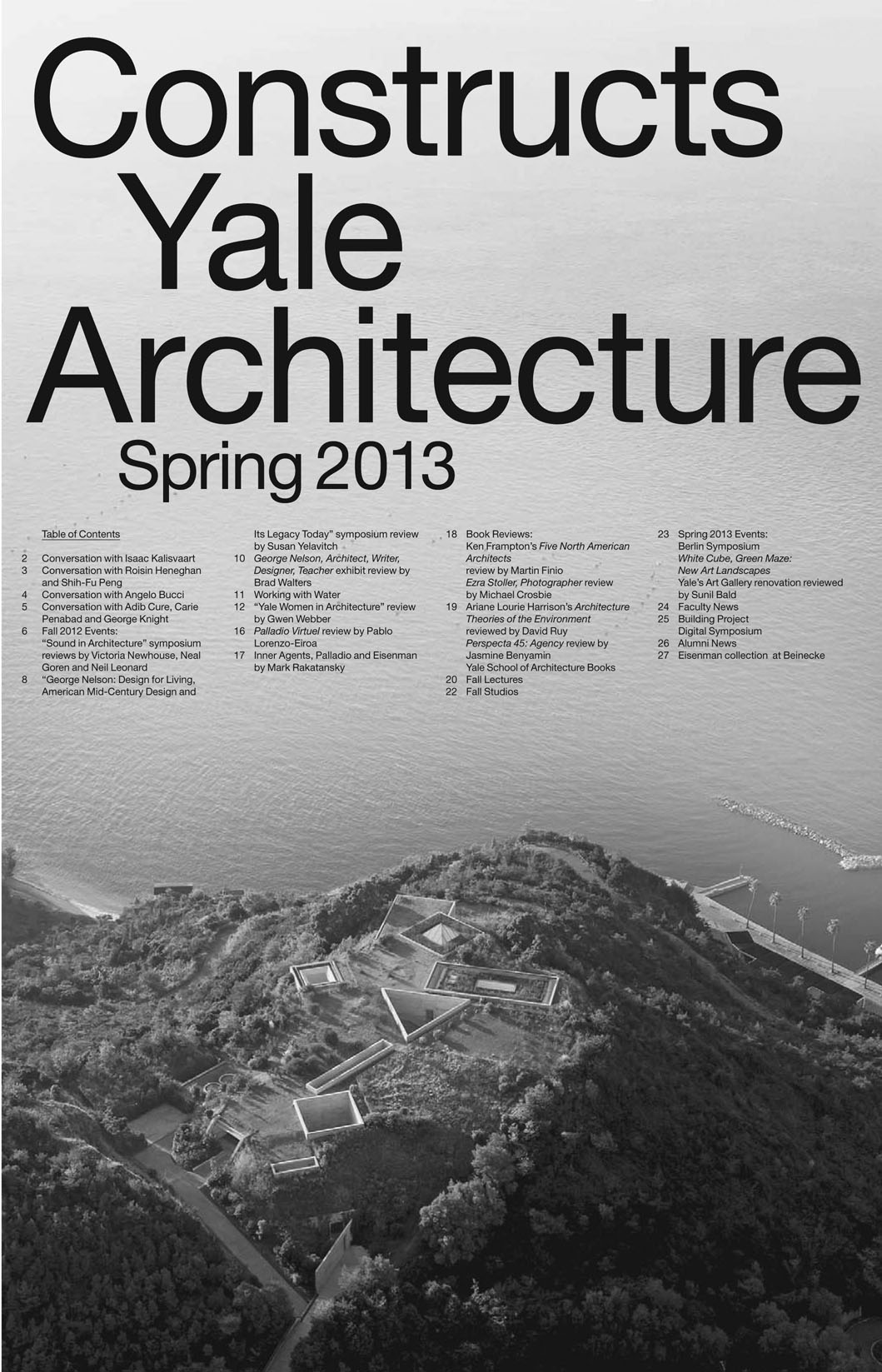
The following is a text excerpt from a recent
architecture review of Peter Eisenman's Palladio Virtuel, an exhibition on
the work of Andrea Palladio that took place at Yale University
School of Architecture during the Fall of 2012. This exhibition
review was published in Yale's Constructs semester publication.
Eisenman’s
Palladian Virtuality: Ahistoric Parametric Undecidability
(excerpt)
by Pablo Lorenzo-Eiroa
How do Peter
Eisenman and Matthew Roman turn an exhibition on Andrea Palladio
into an architectural exercise? Will this exhibition trigger another
neo-Palladianism? Why in 2012? What is the contemporary relevance of
the installation at the Yale School of Architecture, currently
dominated by use of the computer in architectural representation?
Why does Eisenman think Palladio was not a Mannerist? And finally,
how far do the consequences of such a negation go?
Eisenman and
Roman address different aspects of these questions from the moment a
visitor enters the space. Expecting to see drawings or models, the
viewer first experiences an architectural exercise that opens up
various dimensions of architectural representation. While reading
Palladio’s work differently and activating another neo-Palladianism
may seem out of time, this exhibition comes to us when historic
disciplinary precedents have been replaced by an ahistoric
architecture, one that has substituted culture with technological
progress, understanding precedence by displacing the structure of
the latest computational algorithm.
Palladio’s
influence has shifted historically in relation to the reading of his
architecture, making relevant both his work and that of architects
who project different understandings of his oeuvre. These readings
have shifted from stylistic emulation, displacing architecture
signification, to a parametric coding and organizational
methodologies implicit or projected in Palladio’s spatial
arrangements. Historians have identified Palladio as a Mannerist
architect in that he displaced Renaissance canons, opening up the
field for the Baroque. Eisenman analyzes a challenging quality in
the relative autonomy of Palladio’s building’s parts relative to the
whole , which seems to contradict the mere displacement of a clearly
structured whole, separating his work from a Mannerist attitude.
Architectural historian Rudolph Wittkower’s analysis of Palladio’s
villas recognized an underlying displaced whole, which became
canonical in revealing a nine-square pattern common to eleven of his
villas. This well-accepted thesis is the most important
structuralist assumption that Eisenman questions. However, Eisenman,
himself a radical architect and a continuous critical innovator,
develops this exhibition devoid from historicism by introducing a
close reading that implies a historical reformulation difficult to
dismiss and implying many consequences. One of these may go as far
as to reformulate certain commonly assumed fundamentals of
Eisenman’s own project.
"Eisenman’s Palladian Virtuality:
Ahistoric Parametric Undecidability" Pablo
Lorenzo-Eiroa, Constructs, Ed. Nina Rappaport, Yale Architecture,
Spring 2013.